Neil Leifer's photographs are to sports what the Oxford dictionary is to the English language.
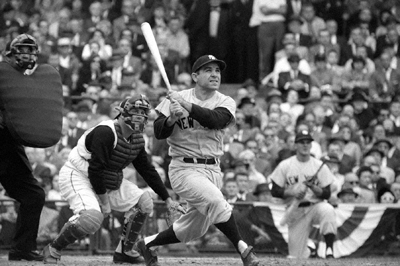
Employing the word "iconic" to describe them comes just a little too easily.
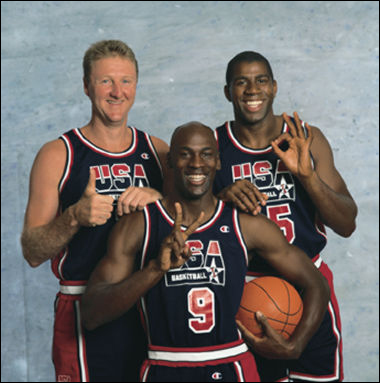
Don't take my word for it. Frank Deford says,"Neil Leifer's photographs chronicle sport as well as any journalist's words." He calls Leifer's photograph of Muhammad Ali standing over a fallen Sonny Liston "the most legendary sports photograph of the 20th century."

On the occasion of the Annenberg Center for Photography's new exhibit Sport: Iooss and Leifer sports photographer Neil Leifer talked to me about a career that began in his teens and made him one of the most frequently published photographers in Sports Illustrated, TIME, the Saturday Evening Post and LIFE. I wanted to know what role luck played in getting the most memorable images of events that were covered by dozens of others. I even found out which of all of his thousands of photos is displayed in his home. It's not the one you would think.
NL: The Cleveland Williams Ali knockout is my all time favorite picture and the only one that hangs in my house. 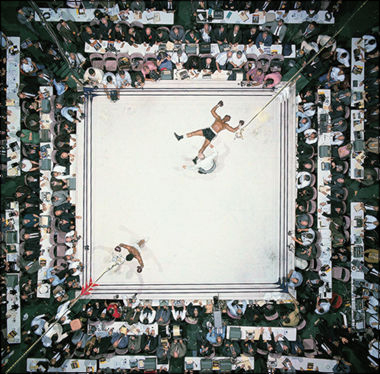
The London observer about five years ago did a story on 50 greatest sports pictures of the century and they chose this overhead as number one and the knockout second. But it wasn't good enough in 1965 to make the cover of Sports Illustrated. It was fourth page of a four page spread.
CS: Let's talk about the role of luck in your work. How much would you say has to do with your planning in advance and how much is happenstance? How come you can cover the same event as five other photographers and always take the cover shot? For example, one of your better known photographs is of Secretariat winning the Kentucky Derby in 1973.
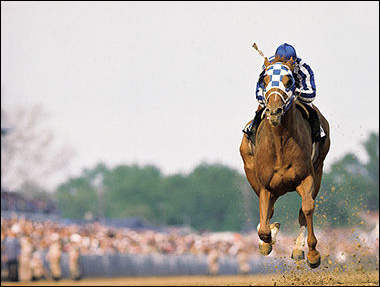
NL: The challenge was to make the horse look special. Planning went into that of course; with racing you have a damn good idea that the horse has to go over the finish line at the end of the race. Could I have predicted that all four hooves would be off the ground? Of course not. It's a motor driven camera and at that point I got lucky.
Of course it wasn't an accident that the score board here is behind Sandy Koufax when he is on the mound.
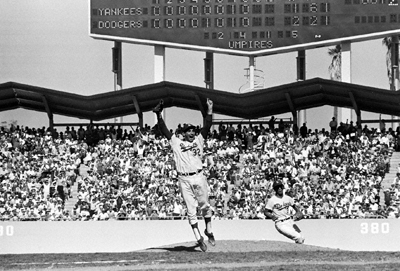
What separates a really good photographer from an ordinary one is that first you get lucky and then you don't miss. The job of any sports photographer is not to miss. You can't control your luck. It has everything to do with how well you execute when you get lucky. Nobody's lucky all the time and the really good photographer makes something out of nothing.
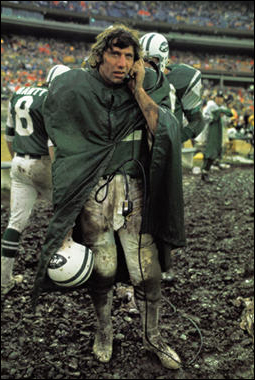
CS: Any examples of just plain luck?
NL: [The Baltimore Colts'] Alan Ameche scoring the wining touchdown vs. the NY Giants in "Sudden Death" overtime. It's one of the great sports pictures of all time. I had no business coming back with something that exceptional. The only reason I took it that way is that I didn't have a better piece of equipment to work with. If I'd had a medium telephoto lens at the time I would have used it. I was dreaming of a medium telephoto lens in those days, but I couldn't afford one.
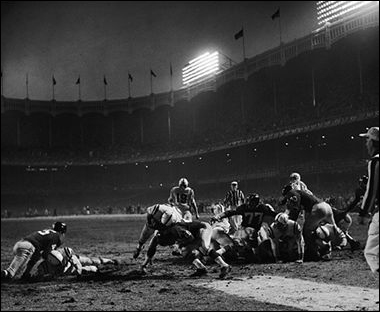
Sometimes the more choices you have the better the odds are you'll choose wrong. William Loos was a genius at it; he worked with the minimum of equipment.
CS: How did sports photography become your specialty?
I started off with aircraft carriers and model ships and it was like a hobby, but sports is the thing people began buying. I realize my legacy is as a sports photographer, and I don't want to sound bitter or like I'm complaining but I wanted to cover things in addition to sports. At TIME I got to cover the world and everyone from the Pope
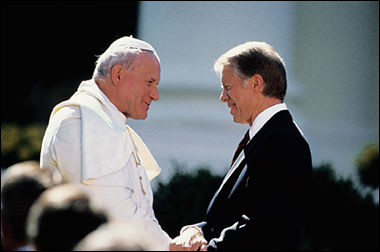
to Charles Manson.
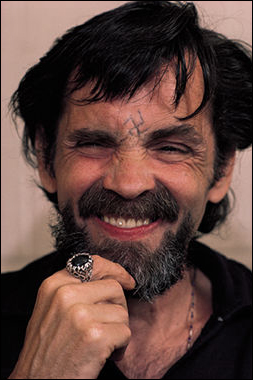
And from presidents,

to the animals of Africa.
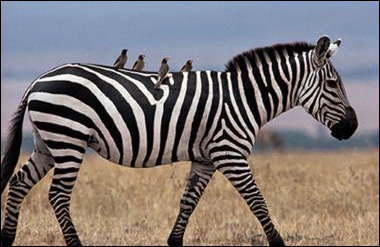
[When I covered] life in prisons for TIME I made it a point to use the same technique as I did for the famous Ali Williams picture: an overhead shot that was perfectly symmetrical.
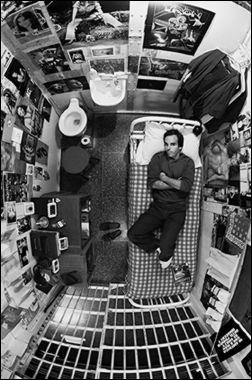
And I'm very proud of these other pictures.
Let's talk about portraits. One of your best known is ironically that of a sports figure that ended up on the cover of TIME; (University of Alabama football coach) Paul Bryant.
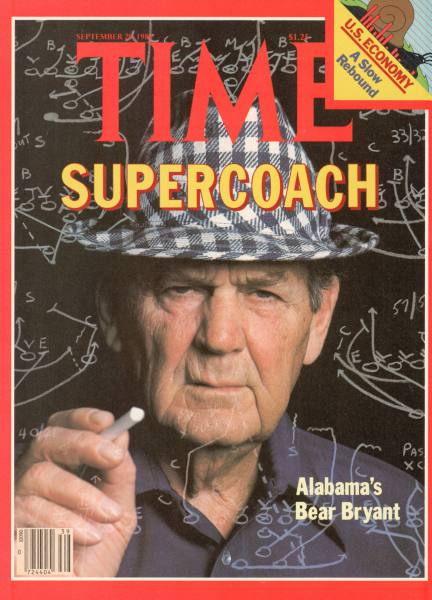
That's actually a great example of how you learn from your mistakes. Back in 1964 Don Shuler was coaching the Colts who were the favorites to win the NFL Championship and the magazine made a deal with Shuler that he would write on 'how we won the championship' and I was assigned to cover him. I came up with the idea of making it look like we are looking at him through a black board. I shot through the two plates of glass. But of course the Colts managed to lose and the picture never ran on the cover. I also realized that just wasn't the way to shoot the picture; it was lit poorly and there was no depth of field. Later I was assigned to shoot [coach John] Wooden, the UCLA coach, but when you shot Wooden, he became wooden. Sweet man, but no visual charisma, and the same problem with the glass. Then a few years later I tried it with Fran Tarkenton (quarterback for the Vikings) and each time I tried I got closer to figuring out how to do it. By the time I got assigned to do Bryant, I had figured out you can do it as a double exposure. Instead of winding the film after I shot his face, I switched cameras and then took a shot of the plays. It took more than ten years and I had lucked out because now I had the perfect face to take that picture with.
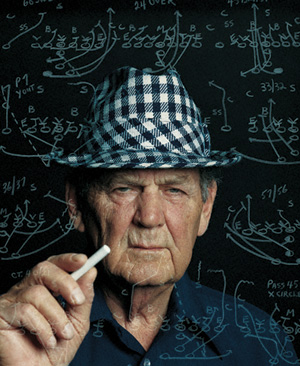
Speaking of perfect faces, tell me about your recent day spent covering your grandson's football game.
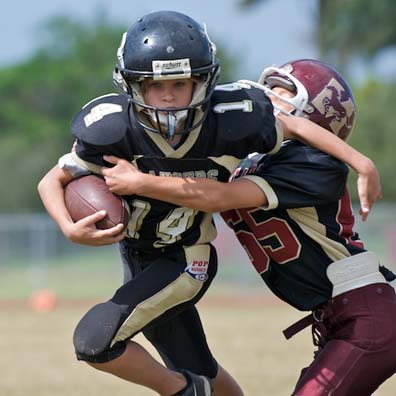
I just treated this as an assignment to shoot one running back. Joey Osborne, and when he wasn't in I shot him on the bench with my back to the game.
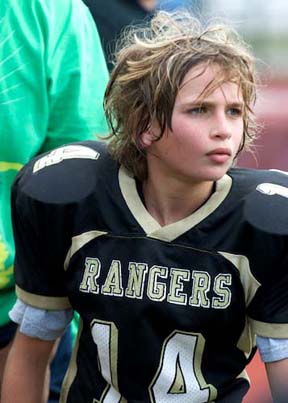
CS: Were you shooting as if it were for SI or as a grandfather?
NL: It was just fun, it's not any different than any father going in to shoot the game [pause] well, I probably have better equipment.
Click here for more information on how you can attend Neil Leifer's lecture this Saturday, February 13th.